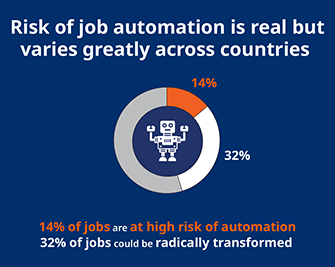
Why look into microwork in Toronto?
We surfaced some of today’s issues and opportunities by applying foresight methodology to microwork. This report offers strategic perspectives for employers, planners, policymakers, and employment services providers.
It is crucial to understand fast-growing sectors to support future job seekers. That means keeping an eye on technology, especially in Toronto. Take Amazon as an example. It is the corporation that operates the dominant microtasking platform, Mechanical Turk.
Amazon Canada is placing itself at the centre of Canada’s tech industry. In 2018, Amazon opened a 113,000 square foot Tech Hub in Scotia Plaza. In September 2019, Amazon announced a Scarborough fulfilment centre – its 12th in Canada. These initiatives represent 5,000 full-time jobs in Toronto, Scarborough, Brampton, Mississauga, Milton, Caledon and Ottawa.
Amazon offers many traditional and stable full-time jobs. Toronto’s Mayor, John Tory, expressed his support for the Tech Hub:
Amazon’s expansion of its Toronto Tech Hub underscores the incredible tech talent we have in our city, and jobs like these allow us to retain and attract high tech talent locally,
– Amazon Canada, December 18, 2018
But can tech giants rewrite the rules of work?
Microwork platforms are scalable tech ventures that earn mega-profits. The revenues of the top corporations are larger than the GDP of many countries. Amazon is one of the top four largest companies in the world by market value. The others in order of size are Apple, Microsoft, Amazon, and Alphabet (Google). Last year, Amazon’s net revenue was 232.9 billion USD, up from 177.9 billion USD in 2017.
There’s no doubt that microwork is a growing field, dominated by mega-corporations like Amazon and Google.
The World Bank report, The Global Opportunity in Online Outsourcing, provides an in-depth look at the state of online outsourcing worldwide.
The microwork market is dominated by two firms, both of which follow open services platform business models: Amazon Mechanical Turk and CrowdFlower. Industry experts suggest that these firms currently have combined annual global gross services revenue of about $120 million; together, they form about 80 per cent of the microwork market.
– The World Bank, June 1, 2015, page 3
Is microwork part of the future of work?
Understanding the technology industry and technology jobs is critical for workforce planning. New jobs are emerging through infotech and biotech advances. New forms of work are the result of globalization and socio-economic change.
What TWIG considered in this project is the work that is enabled by technology platforms, called microwork. The report features points of view on microwork, essays and foresight findings. Finally, we arrived at five strategic perspectives, which are ways to think about the future. They are the final output of the foresight method used for this project.
The OECD’s Employment Outlook 2019, considers the labour market and the future of work:
The complex interplay of globalization, technological and demographic changes is generating many new opportunities but also challenges for many workers across the OECD. Identifying who is likely to benefit and who may lose out of these deep changes is essential to inform policies contributing to the development of a more inclusive labour market.
– OECD, The Future of Work, 2019
Future of microwork in figures
OECD’s infographic data based on data on Employment Outlook 2019.
- Microtasking reports - March 12, 2020
- Microtasking project toolkit - March 2, 2020
- Microwork futures: strategic perspectives - February 24, 2020



















